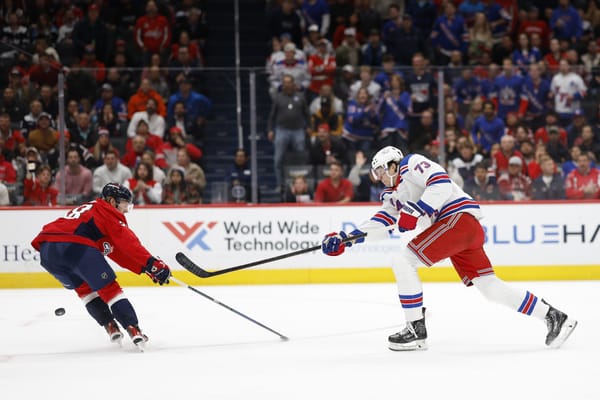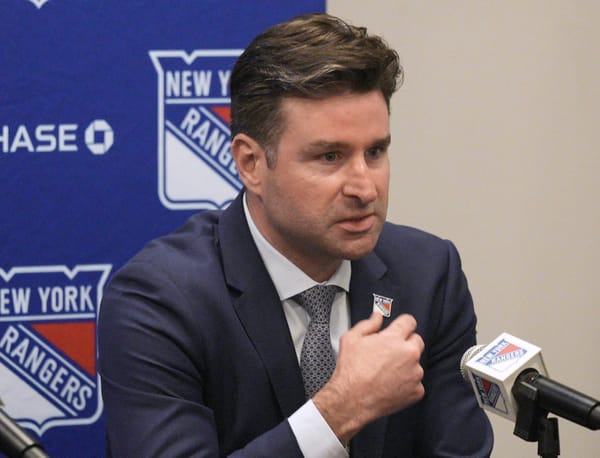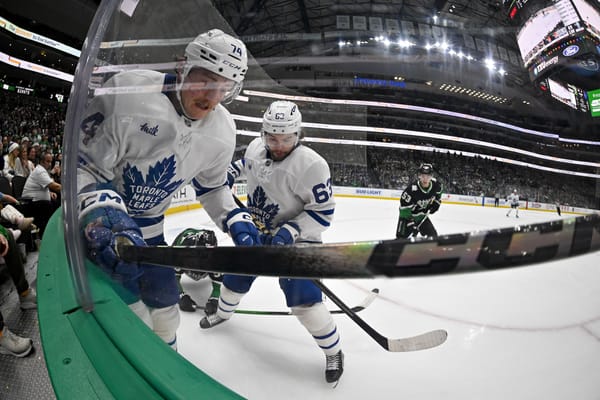2020 Report Card: Brendan Smith
That’s fourth line right winger slash top-pair defender Brendan Smith, thank you very much
Expectations
Brendan Smith entered the 2019-20 season surrounded by question marks regarding his role with the New York Rangers. In 2018-19, Smith played 63 games and averaged 15:18 TOI/GP, spending much of the tail end of the season as a fourth line forward. That was rough, but still a significant improvement over the 2017-18 season — the first year of Smith’s four-year contract with an average annual value of $4.35 million — where he spent time in the AHL with Hartford. It was a significant fall from grace for a player who many had hoped would bring balance and quality to New York’s top-four.
Related
Brendan Smith: a man without a role
Young blueliners Adam Fox and Libor Hajek made the roster out of training camp, which left the Rangers with a crowded defense. The Rangers also had a dearth of good options for fourth liners with so much youth in the lineup. So, Smith, a natural defenseman, started the year as a winger. “I think he had a really good (training) camp, and he had a great stretch last year when he played forward and no problem playing it for an extended period of time,’’ Rangers head coach David Quinn said back in October.
Thus, the stage was set for another frustrating, bewildering year for Smith.
Performance
Smith scored an empty-net goal in his first game of the season, and started the year with three points in four games. And then he had one goal and one assist in his next 49 games. finishing the season with a career-low in average ice time, 11:06 TOI/GP.
After the Rangers dealt Brady Skjei to the Carolina Hurricanes, Smith went from being a healthy scratch for three consecutive games to playing 18:25 on Feb. 25 with Jacob Trouba as his defensive partner. Yes. That happened. Really, that radical change in his role sums up Smith’s current position with the team. He’s an overpriced roll of duct tape. You know the type — it never rips cleanly and immediately doubles over on itself, rendering itself useless.
To be as fair as possible, we’re going to look at Smith’s underlying numbers before the Skjei trade. Smith had a -6.23 Rel CF% (score and venue adjusted) — the third-worst Rangers skater in the shot share among lineup staples — and a -7.34 Rel xGF% (SVA) — ahead of only Kaapo Kakko and Brett Howden. He had a favorable -0.15 Rel xGA/60, but the Rangers clearly struggled to generate offense with him playing right wing on the fourth line. It’s almost like he was a defenseman given no reason to be confident in his abilities by his coaching staff who was forced to play forward at the NHL level.
Which is not to say he was utterly invisible all year long. In fact, he scored one of the more memorable goals not scored by Artemiy Panarin or Mika Zibanejad in the 2019-20 regular season.
In November, Smith spoke with ESPN’s Emily Kaplan about his transition to forward and the challenges he faced. Clearly, this was no walk in the park for the veteran skater.
“I understood the game enough where I felt somewhat prepared, but there are certain areas that are tough for guys that have even played forward forever — getting the pucks out on the walls and those areas. Playing as a forward, you’re balls to the wall a bit. You’re forechecking. You’re almost never not skating. You’re skating as a defenseman, but it’s a different type of skating. As a forward, you’re huffing and puffing a little more coming off. As a defenseman, you are reading the play a little more, and then as a forward you are reacting to the play a little more.”
Smith finished the season with three goals, five assists, 45 shots, a -3 penalty differential, and was one of the most physical players in the lineup, averaging 5.93 hits per-hour. In short, he did his best to do whatever he could in whatever role he was given, but was often tasked with twisting a screw into a plank of wood when there was a hammer looking back at him in every mirror he locked eyes with.
Grade: B-
Banter Consensus: C
I was exceptionally lenient with Smith because I could not fault him for his performance on the fourth line given who he was playing with and, more importantly, because he’s a natural defenseman. With that being said, I was a little too generous here. The Banter crew as a collective hit the nail on the head with the ass-end of the screwdriver with the “C” grade for Smith.
At the end of the day, it is Smith’s responsibility to win back the confidence of the coaching staff even after his confidence has been repeatedly shattered. That Sisyphus-like fate comes hand-in-hand with having a big contract even if you can’t fault Smith for signing that deal. And of course you can’t. Professional athletes need to make as much as they can in careers that are brief enough to be summarized on the back of 2 and 1⁄2 inch by 3 and 1⁄2 inch trading cards.
As frustrating as Smith’s tenure in New York has been, this isn’t all on him. It can’t be. It’s easy, and likely fair, to place the lion’s share of the blame on him for how he performed in the first year of his contract. But this was year three of his contract. At some point, it’s up to the organization to help rebuild a player’s confidence and get them back on track.
The good news for all parties involved is that the 2020-21 season is the last of Smith’s contract. The only question now is whether or not he’ll be seen as a seventh defenseman, a fourth line winger, or a roll of duct tape. Chances are, it’ll be the latter due to the fixed salary cap and chaos being the only rule that matters in the universe.
Data courtesy of Natural Stat Trick and Evolving-Hockey. All salary information courtesy of Cap Friendly.




